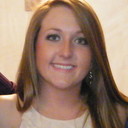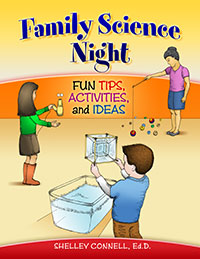Family Science Night Fun
Family Science Night: Fun Tips, Activities, and Ideas
By Shelley S. Connell, Ed.D.
(Eye on Education/Routledge, 2012 – Learn more)
Family Science Night: Fun Tips, Activities, and Ideas by Shelley S. Connell will be a great resource for elementary grades as well as older children. The goal of any science teacher should be to improve their students’ science literacy and encourage positive attitudes toward science. This book goes a step further and involves parents in their children’s learning.
When I first selected the book, I thought it would be about activities that parents can do at home with their own children. However, it is geared more toward a group of parents completing the activities together with their children during a “science night” at school or in a club or after-school setting. The setting could be a science club that meets weekly or every other week. I relate it to Boy Scout or Girl Scout meetings where parents are the troop leaders. I think that’s a much better approach because students are interacting with their parents, other adults, and their peers.
The book also suggests ways to recruit volunteers, and I thought some great options were college students, local medical professionals, administrators, or other professionals in the science field. These volunteers can further encourage students to choose science-centered career paths.
 A Step by Step Formula for Creating Science Night
A Step by Step Formula for Creating Science Night
I really like the overall setup of the book. It starts with the benefits of family science nights and then explains all the things that go into putting a family science night together. I also think it’s great that this book outlines some ways that groups might attract funding for the activities.
Following the background information, the activities begin with a table listing the title of each activity and the learning objectives of each. As an education major, I understand the great importance of learning objectives and it’s a good idea to briefly outline all the activities, with objectives, at the start. This will allow teachers and parents to easily select an activity that aligns with their goals.
Detailed guidelines for each activity
A lot of the activities in this book would be great to use in middle school science — like the activities on motion, states of matter, heart rate, density, and planets. Many activities could also be used in a secondary education classroom. The activity around acids and bases and another on the hydrophobic properties of certain substances would both fit well into the first year of HS biology.
Another good feature of the activities is the “station checklist” which outlines the materials needed and potential retailers. The materials are divided into two categories: “reusable” and “consumable,” and I thought this was a really efficient way to list the required supplies. There are also material safety data sheets for any activities that involve potentially harmful substances.
Science activities provide students with opportunities to harness their creativity, imagination, and innovation. The activities outlined in this book are easy to follow and present the material in an open-ended fashion. According to the author, a study done in March 2010 revealed that 65% of scientists and science graduate students say their interest in science began before middle school. This was true for me — my interest began in elementary school when we did an activity with bean sprouts in the third grade. I love science because there are so many interesting lessons and teachers have a lot of opportunities to incorporate fun activities into those lessons.
A great resource in the classroom and beyond
Overall, I think this book would be a great resource to use in the science classroom and that family science night would be a good idea to develop in the local community. As a K-12 student, I would have liked to participate in Family Science Night. As a future teacher, I can imagine working to introduce the idea of Family Science Night to parents, both to increase their engagement and advance my students’ interests. The book is organized in a way that is very easy to understand and the activities included appear to be very useful and educational.
Catherine Pierce is a Gulfport, MS native and a recent Magna Cum Laude graduate of Mississippi State University, earning a Bachelor’s degree in Secondary Education with a concentration in Biology. She’s now doing graduate studies at MSU in education and science.




































